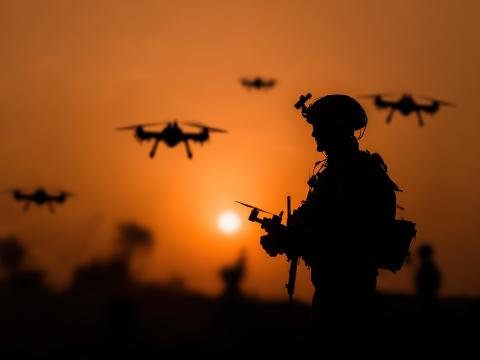Update on the Asia-Pacific
Military activities in the Asia-Pacific region have become more focused since the release of a defense strategy a few months ago that places renewed attention on the global area. Through U.S. Pacific Command's (PACOM's) recent theater campaign plan, leaders are telling the subordinate military-service components to report back in a year on how efforts are working while deconflicting duplicate programs.
U.S. Pacific Command’s J-5 gives perspective on regional changes, troop rotations, China and extremists.
Military activities in the Asia-Pacific region have become more focused since the release of a defense strategy a few months ago that places renewed attention on the global area. Through U.S. Pacific Command's (PACOM's) recent theater campaign plan, leaders are telling the subordinate military-service components to report back in a year on how efforts are working while deconflicting duplicate programs.
Though much of PACOM's approach to its area of operations is the same as before the strategy's release, a focus on synergy ensures that personnel have a better overall knowledge of everyone else's actions. This process streamlines time and resources, while ensuring partner nations receive the support they need. Maj. Gen. Michael A. Keltz, USAF, director, strategic planning and policy (J-5), PACOM, illustrated the problem during a recent bloggers roundtable, explaining that at one point, 16 different explosive ordnance disposal teams were going into the Philippines to work with forces there. Other times, the United States would carry out five or six activities with a nation in a short time frame and then not engage with that partner again for several years. Gen. Keltz said that now PACOM has a more deliberate, laid out process for scheduling. The plan also involves working with countries on their own goals, such as overcoming past human rights abuses.
The military services additionally will increase their rotational forces in the Asia-Pacific region. Along with the Marines, who already have started sending contingents to work in Australia, soldiers are orienting themselves in the area as well. "The U.S. Army is coming on hard and strong, and its presence will be felt throughout all of Southeast Asia," Gen. Keltz stated. The Air Force has been rotating throughout the Pacific for several years with a steady presence in Guam while Navy ships continue operations.
A new class of combat ships deploying to the region will be vital, the general explained, because of the tyranny of distance faced by those operating in the area. The continental United States could fit in the Asia-Pacific 12 times, and it takes almost a month to sail from San Diego to Southeast Asia. The combat ships will assist with force posturing, rotational troop presence and relationship building. One of the ships—the USS Freedom— is scheduled to deploy to Singapore in 2013.
Finding ways to work with China remains a priority. Relations between the two nations will have ramifications throughout the region. Gen. Keltz stated that other countries do not have to ally with one or the other. "It's not a zero-sum game," he explained. U.S. officials want the Chinese military to participate in the Chiefs of Defense conferences. The general said that when China chooses not to engage, other leaders miss that nation's point of view, and that point of view is often represented by someone else.
Also of concern in the region are violent extremist organizations, but Gen. Keltz does not foresee a major threat to U.S. forces, even as the Afghanistan conflict comes to an end. He explained that nations in the Asia-Pacific already are taking a whole-of-government approach to counterterrorism to deal with transnational enemies. "There's a regional resolve to stand up to this threat," Gen. Keltz stated. Indonesia and Bangladesh, for example, have created a regional multination information sharing capability to address the problem.




Comments